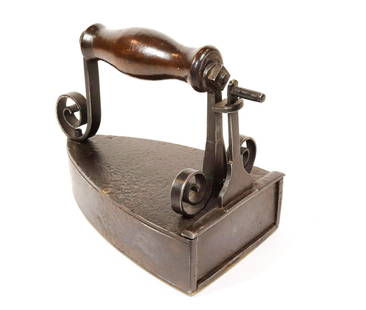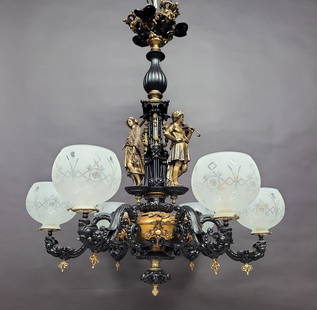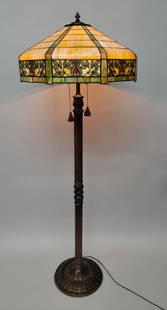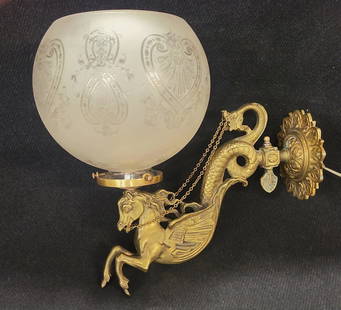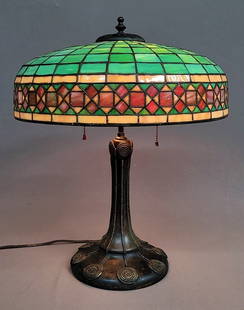

 Discovery- InteriorsBonhamsSponsored.Your ad here?
Discovery- InteriorsBonhamsSponsored.Your ad here?



Discovery- Interiors
Bonhams
Sponsored.Your ad here?


 Discovery- InteriorsBonhamsSponsored.Your ad here?
Discovery- InteriorsBonhamsSponsored.Your ad here?



Discovery- Interiors
Bonhams
Sponsored.Your ad here?

Flat Irons, Pair, Brass, 19th C.
Similar Sale History
View More Items in Home & DécorRelated Home & Décor
More Items in Home & Décor
View More











Item Details
Description
These two irons are made of brass with wooden handles. The larger of the two is more intricate in its design, with a pair of carved stag heads leading up to the grip and a turtle as the fastener. The body of the irons have lids that can be secured with anchor shaped latches, inside of which is meant to be burning charcoal.
Condition
Weight (Lbs): 6
Height (In.): 6.5
Width (In.): 3.75
Depth (In.): 5.5
Size: 518.5 x 4.0 x 4.0"
Maker: Unknown
Material: Bronze, Wood
Date: 19th C.
Provenance:
Condition: Some patination and scratching, no noticed breaks. Rubbing to the handles, one screw is a replacement.
History: Metal pans filled with hot coals were used for smoothing fabrics in China in the 1st century BC. From the 17th century, sadirons or sad irons (from an old word meaning solid) began to be used. They were thick slabs of cast iron, delta-shaped and with a handle, heated in a fire. These were also called flat irons. A later design consisted of an iron box which could be filled with hot coals, which had to be periodically aerated by attaching a bellows. In Kerala in India, burning coconut shells were used instead of charcoal, as they have a similar heating capacity. This method is still in use as a backup device, since power outages are frequent. Other box irons had heated metal inserts instead of hot coals. Another solution was to employ a cluster of solid irons that were heated from a single source: As the iron currently in use cooled down, it could be quickly replaced by a hot one. In the late nineteenth and early twentieth centuries, there were many irons in use that were heated by fuels such as kerosene, ethanol, whale oil, natural gas, carbide gas (acetylene, as with carbide lamps), or even gasoline. Some houses were equipped with a system of pipes for distributing natural gas or carbide gas to different rooms in order to operate appliances such as irons, in addition to lights. Despite the risk of fire, liquid-fuel irons were sold in U.S. rural areas up through World War II. In the industrialized world, these designs have been superseded by the electric iron, which uses resistive heating from an electric current. The hot plate, called the sole plate, is made of aluminium or stainless steel polished to be as smooth as possible; it is sometimes coated with a low-friction heat-resistant plastic to reduce friction below that of the metal plate. The heating element is controlled by a thermostat that switches the current on and off to maintain the selected temperature. The invention of the resistively heated electric iron is credited to Henry W. Seeley of New York in 1882. In the same year an iron heated by a carbon arc was introduced in France, but was too dangerous to be successful. The early electric irons had no easy way to control their temperature, and the first thermostatically controlled electric iron appeared in the 1920s. Later, steam was used to iron clothing. Credit for the invention of the steam iron goes to Thomas Sears. The first commercially available electric steam iron was introduced in 1926 by a New York drying and cleaning company, Eldec, but was not a commercial success. The patent for an electric steam iron and dampener was issued to Max Skolnik of Chicago in 1934. In 1938 Skolnik granted the Steam-O-Matic Corporation of New York the exclusive right to manufacture steam-electric irons. This was the first steam iron to achieve any degree of popularity, and led the way to more widespread use of the electric steam iron during the 1940s and 1950s.
Height (In.): 6.5
Width (In.): 3.75
Depth (In.): 5.5
Size: 518.5 x 4.0 x 4.0"
Maker: Unknown
Material: Bronze, Wood
Date: 19th C.
Provenance:
Condition: Some patination and scratching, no noticed breaks. Rubbing to the handles, one screw is a replacement.
History: Metal pans filled with hot coals were used for smoothing fabrics in China in the 1st century BC. From the 17th century, sadirons or sad irons (from an old word meaning solid) began to be used. They were thick slabs of cast iron, delta-shaped and with a handle, heated in a fire. These were also called flat irons. A later design consisted of an iron box which could be filled with hot coals, which had to be periodically aerated by attaching a bellows. In Kerala in India, burning coconut shells were used instead of charcoal, as they have a similar heating capacity. This method is still in use as a backup device, since power outages are frequent. Other box irons had heated metal inserts instead of hot coals. Another solution was to employ a cluster of solid irons that were heated from a single source: As the iron currently in use cooled down, it could be quickly replaced by a hot one. In the late nineteenth and early twentieth centuries, there were many irons in use that were heated by fuels such as kerosene, ethanol, whale oil, natural gas, carbide gas (acetylene, as with carbide lamps), or even gasoline. Some houses were equipped with a system of pipes for distributing natural gas or carbide gas to different rooms in order to operate appliances such as irons, in addition to lights. Despite the risk of fire, liquid-fuel irons were sold in U.S. rural areas up through World War II. In the industrialized world, these designs have been superseded by the electric iron, which uses resistive heating from an electric current. The hot plate, called the sole plate, is made of aluminium or stainless steel polished to be as smooth as possible; it is sometimes coated with a low-friction heat-resistant plastic to reduce friction below that of the metal plate. The heating element is controlled by a thermostat that switches the current on and off to maintain the selected temperature. The invention of the resistively heated electric iron is credited to Henry W. Seeley of New York in 1882. In the same year an iron heated by a carbon arc was introduced in France, but was too dangerous to be successful. The early electric irons had no easy way to control their temperature, and the first thermostatically controlled electric iron appeared in the 1920s. Later, steam was used to iron clothing. Credit for the invention of the steam iron goes to Thomas Sears. The first commercially available electric steam iron was introduced in 1926 by a New York drying and cleaning company, Eldec, but was not a commercial success. The patent for an electric steam iron and dampener was issued to Max Skolnik of Chicago in 1934. In 1938 Skolnik granted the Steam-O-Matic Corporation of New York the exclusive right to manufacture steam-electric irons. This was the first steam iron to achieve any degree of popularity, and led the way to more widespread use of the electric steam iron during the 1940s and 1950s.
Buyer's Premium
- 24.5%
Flat Irons, Pair, Brass, 19th C.
Estimate $50 - $150
1 bidder is watching this item.
Shipping & Pickup Options
Item located in Garrison, NY, usSee Policy for Shipping
Payment

Related Searches
TOP




























